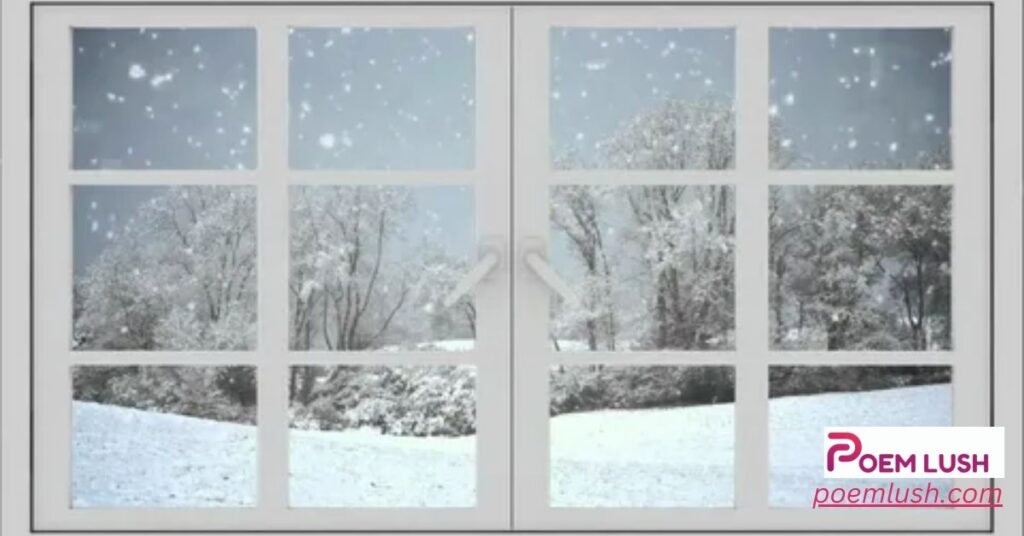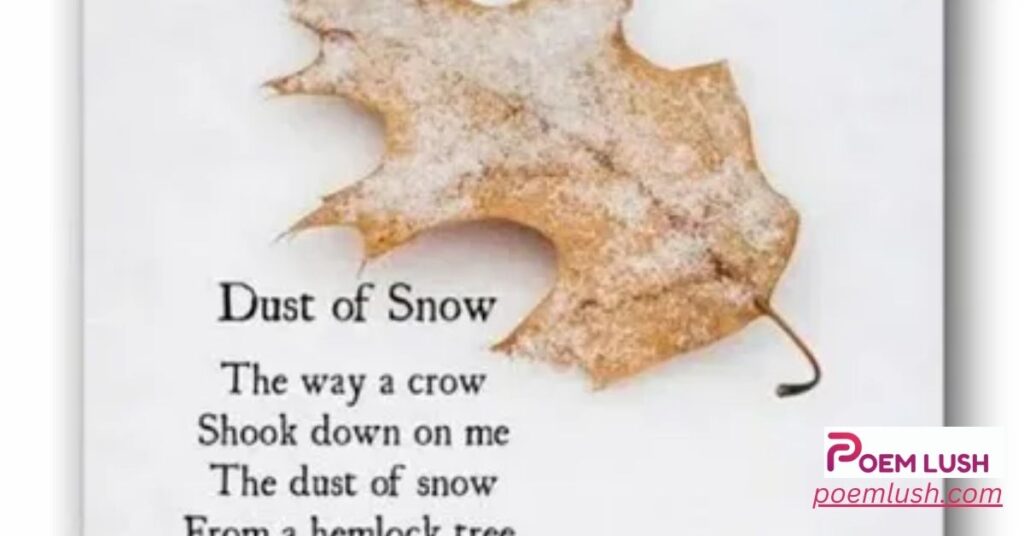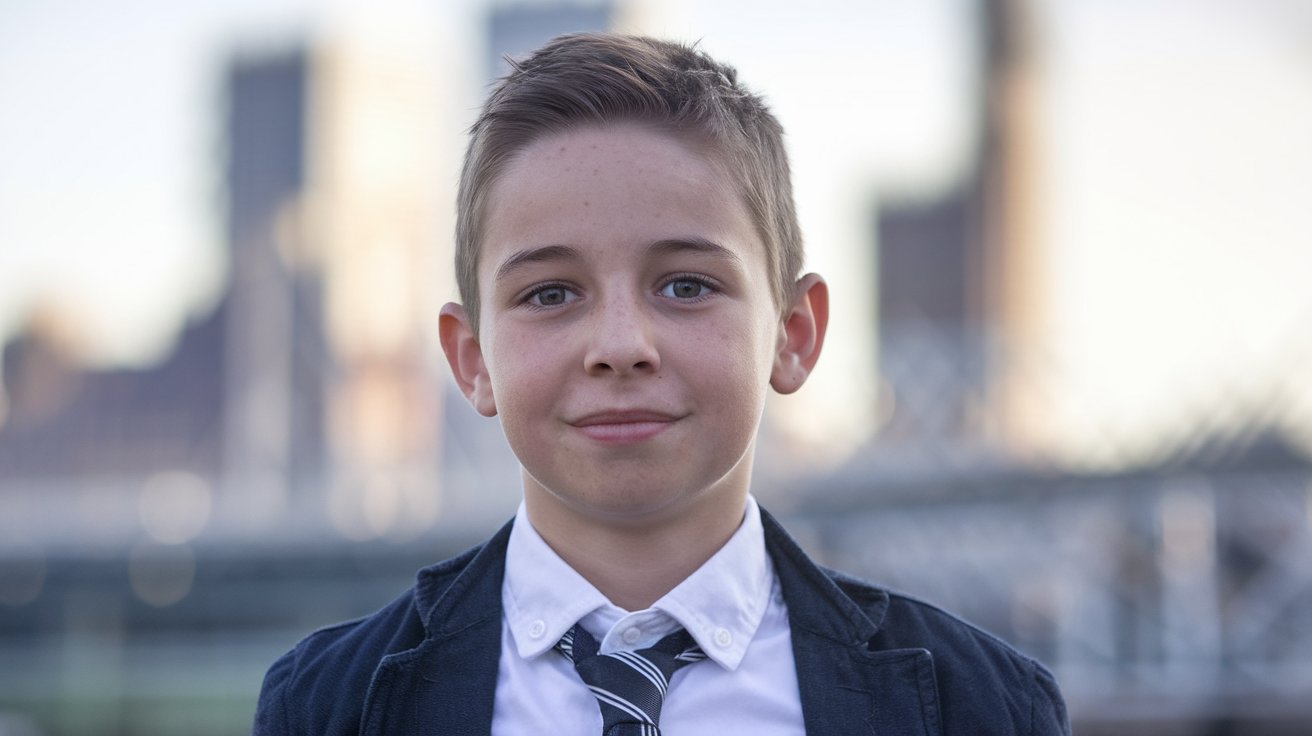A rabbit has stopped on the gravel driveway:
imbibing the silence,
you stare at spruce needles:
—Excerpt from Arthur Sze’s First Snow
The Language of Snow: A Window into Culture

I remember the first time I learned that the Inuit have around 50 words for snow. At the time, my understanding of snow was simple—it was cold, frozen, and if enough fell overnight, school would be canceled the next day. However, discovering that there were so many ways to describe snow challenged my perception of the natural world.Poems About Snow
To have an extensive vocabulary for snow suggests an intimate relationship with it. Snow, in fact, is classified as a mineral, since it is a naturally occurring solid with a defined chemical composition. (1) If a language differentiates between crusted snow (tlacringit) and powdered snow (tlapa) (2), it indicates that these variations significantly impact daily life.Poems About Snow
Digging deeper, I discovered that the Inuit are not alone in their linguistic richness regarding snow.Poems About Snow
- Swedes have around 25 words for snow.
- Icelanders use approximately 46 different terms.
- Scots may have up to 421 words for snow! (3)
Even if this number is debated, the existence of so many terms shows just how integral snow is to different cultures.
Snow in Poetry: A Timeless Inspiration
Given humanity’s deep connection with snow, it is no surprise that it has inspired countless poems. Even Robert Frost, one of the most renowned American poets, wrote at least three well-known poems featuring snow:Poems About Snow
- Stopping by Woods on a Snowy Evening
- Snow
- Dust of Snow (a personal favorite)
Dust of Snow by Robert Frost
The way a crow
Shook down on me
The dust of snow
From a hemlock tree
Has given my heart
A change of mood
And saved some part
Of a day I had rued.
In this short but powerful poem, Frost uses the imagery of a crow shaking snow off a hemlock tree to symbolize an unexpected moment of beauty that changes his perspective. Snow, often associated with cold and bleakness, becomes a metaphor for renewal and hope.Poems About Snow
The First Snow: A Poetic Transition to Winter
The first snowfall of the year is a significant moment. Like the falling of autumn leaves, it marks a seasonal shift, preparing us for the long winter months ahead.Poems About Snow
The Inuit call this first snow trinkyi, while the Norwegians use the word nysnö. Roger Norling beautifully explains the significance of nysnö:
“This snow is spiritually quite important, as it transforms the landscape from a dark and wet Autumn landscape, into a bright white winter scene… Not only does it brighten up the landscape, it also silences it, further adding to the sense of tranquility and calm.” (4)
Several poets have captured this magical transformation, including Diane di Prima and Esther Louise Ruble.Poems About Snow
First Snow, Kerhonkson by Diane di Prima (Excerpt)
This, then, is the gift the world has given me
(you have given me)
softly the snow
cupped in hollows
lying on the surface of the pond
matching my long white candles
which stand at the window
which will burn at dusk while the snow
fills up our valley
Di Prima’s words reflect the spiritual and visual impact of the first snow. The snow cupped in hollows and burning candles create an atmosphere of warmth amidst the cold, evoking a sense of peace and gratitude.
First Snow by Esther Louise Ruble
The night was hiding a secret
When it stole
Through the red gates of sunset,
Coming so silently.
We heard it whispering
To the bare trees
And while we wondered,
The white souls of the autumn leaves
Came softly back,
Drifting, drifting.
Ruble’s poem captures the mystical and silent arrival of snow. The line “the white souls of the autumn leaves” is particularly striking—it suggests that winter revives autumn’s essence in a new, ethereal form.
The First Snow as a Symbol in Poetry
Poems about first snow often explore themes of transition, renewal, and quiet reflection. The first snowfall doesn’t just mark a seasonal change—it invites introspection, stillness, and wonder.
Ethel Romig Fuller, in her poem First Snow, similarly captures this sense of transformation, showing how the first snow alters both the landscape and the human spirit.
Why Snow Captivates Poets
Snow, as a literary device, is often used to represent:
- Purity – A fresh start, a blank canvas
- Isolation – The quiet, lonely aspects of winter
- Transformation – A shift in mood, nature, or life itself
- Ephemeral beauty – The way snow melts, reminding us of time’s fleeting nature
From the haiku of ancient Japan to contemporary free verse, poets across time and culture have found inspiration in snow’s silent power.
The Beauty of the First Snow in Poetry
The arrival of the first snow has long been an inspiration for poets across cultures and centuries. The silent descent of snowflakes, their ability to erase and transform the landscape, and the emotions they evoke have been captured in verse by poets like Ethel Romig Fuller, Kobayashi Issa, and Matsuo Basho. Their words remind us of nature’s quiet power and the fleeting, ephemeral beauty of snow.
Ethel Romig Fuller’s “First Snow”
Ethel Romig Fuller’s poem, First Snow, paints a vivid picture of snow as nature’s eraser. The imagery in her poem describes how snow covers the landscape, wiping away the traces of the past year:
The snow wipes out the writing of the year; Its swift erasers softly surely pass Across the hieroglyphics of the grass And clean the slate of summer spear by spear.
The poet uses powerful metaphors, comparing the snow’s descent to an eraser that clears the remnants of past seasons. The “hieroglyphics of the grass” evoke the intricate patterns left by summer’s growth, now disappearing under the snow. The closing lines of the stanza reinforce the theme of transformation:
Where was a tale of gardens there is now A smudged and undecipherable scrawl, And where illumined lettering of fall A dim-inked outline of an austere bough.
Fuller compares the natural world to a written text, with the snow as an editor erasing and rewriting the landscape. The “dim-inked outline of an austere bough” suggests the stark beauty of winter, where once-vibrant trees now stand as skeletal figures against the sky.
Imagery in Fuller’s Poem
One of the most striking images in the poem appears in these lines:
As fast as feet of pigeons write a word It is obliterated from the walk.
This moment captures the dynamic interplay between movement and erasure. The footprints left by pigeons in the snow exist only briefly before being covered again. This fleeting quality of snow reminds us of impermanence, a theme echoed in other poets’ works.
Parallels in Haiku Poetry
Kobayashi Issa, one of Japan’s most celebrated haiku poets, also captures the transient nature of first snow. His haiku mirrors Fuller’s imagery of footprints disappearing:
the year’s first snow
all trampled…
by the crows
Here, Issa presents a contrast between the purity of fresh snow and its inevitable disturbance. The arrival of birds disrupts the untouched surface, symbolizing how nature constantly reshapes itself.
Issa also wrote another haiku that reflects the remnants of warmth in a cold, snow-covered world:
in first snow
last night’s pine torch
remnant
The mention of a “pine torch” suggests a fire or lantern that burned through the night, now extinguished, leaving behind a trace—just as autumn leaves a shadow upon the winter landscape.
Matsuo Basho, another master of haiku, captures the delicacy of first snow with this simple yet evocative poem:
’Tis the first snow—
Just enough to bend
The gladiolus leaves!
Basho focuses on the subtle impact of snowfall. Instead of describing an overwhelming blizzard, he highlights how a light dusting of snow is enough to bend a flower’s leaves, demonstrating the quiet yet transformative power of winter.
Personal Reflection and Original Haiku
Inspired by these poetic works, I recently observed the first snowfall of the year and composed my own haiku:
smoke from the chimney,
silence overtakes the farm.
the first snow
This haiku attempts to capture the stillness that descends with the first snow, how the world seems to quiet as nature wraps itself in white. The image of chimney smoke suggests warmth within the home, a contrast to the cold outside, evoking a sense of solitude and reflection.
The Enduring Appeal of Snow in Poetry

The theme of first snow in poetry reveals universal emotions—nostalgia, renewal, impermanence, and transformation. Each poet brings a unique perspective, from Fuller’s metaphor of snow as an eraser to Issa’s observation of footsteps being erased, Basho’s delicate description of a bending flower, and my own reflection on winter’s hush.
As the season progresses, I hope to return to the theme of snow in poetry, exploring the ways different poets have captured its magic over the centuries. Perhaps by the time spring arrives, I will have discovered even more ways to describe the beauty of a snow-covered world.
Further Reading and Resources
For those interested in exploring more poetry about snow, here are some recommended resources:
- Ethel Romig Fuller – First Snow, available on the Poetry Foundation.
- Kobayashi Issa – Haiku of Kobayashi Issa, compiled by David G. Lanoue at Haikuguy.com.
- Matsuo Basho – Haiku collections featuring seasonal themes, including The Narrow Road to the Deep North.
- Diane di Prima – First Snow, Kerhonkson, available on the Poetry Foundation.
- Robert Frost – Dust of Snow, a classic meditation on how small moments in nature can shift our perspective.
- Arthur Sze – First Snow, found in Sight Lines.
If you’re inspired to explore more poetry, consider purchasing books by these poets through the NaturalistWeekly’s Bookshop.org storefront. Supporting independent bookstores ensures that the beauty of poetry continues to reach new generations.
Conclusion
Snow has long captivated poets with its serene beauty, quiet mystery, and deep symbolism. Whether portraying the peaceful stillness of winter, the fleeting nature of time, or the purity of fresh snowfall, poets use snow to evoke a range of emotions—from nostalgia and loneliness to wonder and renewal.
From classic verses by Robert Frost to contemporary reflections on winter’s magic, poems about snow transport us into a world where nature speaks in whispers and blankets the earth in poetic silence. Each snowflake tells a story, and every snowfall invites us to pause, reflect, and embrace the season’s gentle lessons.
FAQs
Stopping by Woods on a Snowy Evening” – Robert Frost
One of the most famous poems about snow, this piece captures the quiet beauty of a winter night. The speaker pauses to admire the snow-covered woods, reflecting on life’s responsibilities before continuing on his journey.
The Snow Man” – Wallace Stevens
This poem explores the idea of perception and emptiness. The speaker describes a winter landscape with striking imagery, encouraging the reader to see the world with a detached, objective perspective—just like a “snow man.”
Blow, Blow, Thou Winter Wind” – William Shakespeare
From Shakespeare’s play As You Like It, this poem compares the harshness of winter to the coldness of human ingratitude. The wind may be bitter, but it is not as cruel as the betrayal of a friend.
It Sifts from Leaden Sieves” – Emily Dickinson
Dickinson personifies snow as something gentle and mysterious, describing how it falls softly and covers the earth like an artist creating a masterpiece.
Snowbound” – John Greenleaf Whittier
A nostalgic and lengthy poem that recounts a New England snowstorm, describing the way it transforms the world and brings families together in the warmth of their homes.


